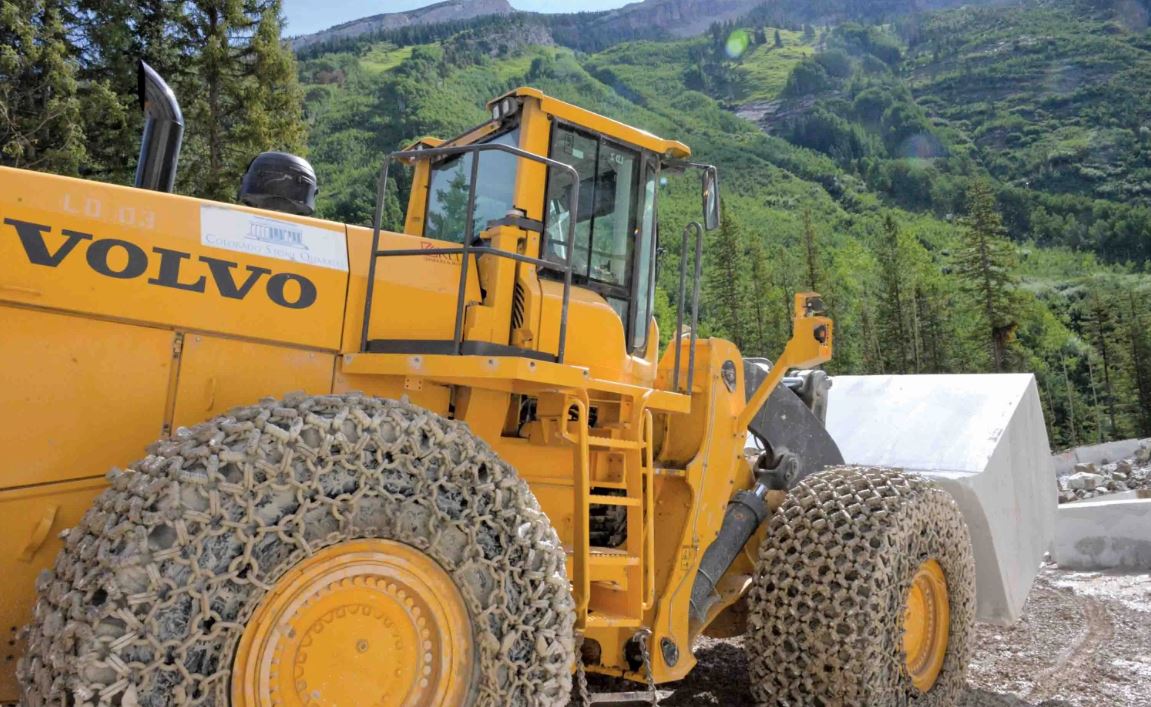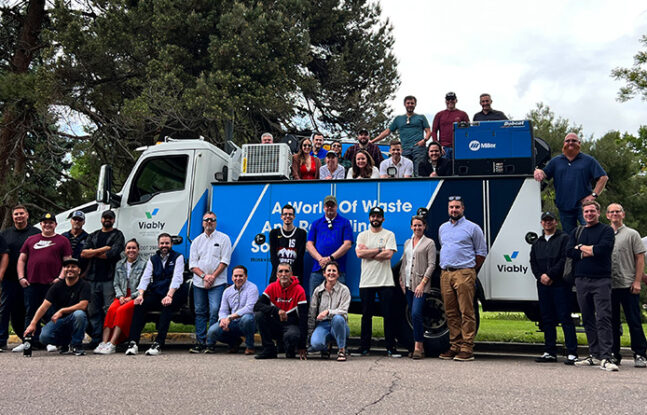Dormant marble quarries are revived to feed international demand.
The towns of Carrara in Italy and Marble in Colorado are worlds apart in both distance and culture. Separated by 8,850km (5,500 miles), one is a Mediterranean port in the Tuscany region of northern Italy, the other a rustic outpost of cabins and stores set amid ponderosa pines and quaking aspen in the high-altitude Rocky Mountains.
The similarities take shape in the geology of the surrounding mountainsides. Stone originating from Carrara and Marble has been immortalized in history’s most iconic sculptures and monuments.
Carrara marble is known as the “stone of the masters” that Michelangelo carved into the statue of David and forms the Pantheon and Trajan’s Column in Rome. Yule marble from Colorado Stone Quarries, Inc was selected for the Lincoln Memorial and Tomb of the Unknown Soldier at Arlington National Cemetery.
Today, Colorado Stone Quarries is experiencing a renaissance ushered in by its parent company, Carrara-based R.E.D. Graniti. For nearly 50 years, the latter has been a global leader in discovering, extracting and marketing premium stone, operating quarries and block-processing facilities on four continents.
Discovery
It assumed ownership of Colorado Stone Quarries in 2011 and holds all mineral rights to a 26-hectare section of the area known as Treasure Mountain. Within three years the company opened four additional marble galleries. “We calculate that we have 1.5 million cubic meters of marble remaining here,” says general manager Daniele Treves.
Treves and quarry master Stefano Mazzucchelli located a new vein of stone in the mountain, where a new quarry entrance has been opened and named Lincoln Gallery to honor the Italian/American connection. This new vein, Calacatta Lincoln, is now the top-selling stone worldwide for R.E.D. Graniti.
“Quarry experts know how to read the mountain and tell if the stone is good or not,” Treves explains. “We look at the cracks, the veining of the exposed stone. We can see if the stone is good or not. And sometimes, you just feel something…that you need to cut there,” he explains.
Mineral variations in marble cause colorations and veining – for example, pure limestone produces white marble, clay gives a reddish cast, and limonite a yellow/golden hue.
Colorado Yule marble, to which the nearby town of Marble with 100 inhabitants owes its name and reputation, was discovered in the 1870s and prized for its gold veining. The original entry is rimmed with primitive cuts and chiseled with the signatures of workers who sawed, loaded and hauled the massive blocks down the switchback dirt mountain road by railcar or mules. World War II brought the quarry to a standstill, and it remained dormant for nearly 50 years.
Colorado Stone Quarries employs a crew of 40 in its year-round operations and has a fleet of 30 machines that includes Volvo L350F, L330E, L120E and L90E wheel loaders, an ECR58D compact short swing radius excavator, EC340D and EC480D crawler excavators and an A35D articulated hauler.
Round The Clock
Stone is extracted with precision cuts – there is no blasting at any stage of the process. Two Volvo L350F wheel loaders are the mine workhorses clocking up 10 hours a day.
“Both of the L350F loaders have the Volvo standard duty block handler kit and forks which can carry up to 65,000 pounds,” says Troy Langston, from the Volvo CE dealership Power Equipment Company based in Grand Junction, Colorado.
The L350F is the largest loader built by Volvo Construction Equipment and is known for its high capacity and outstanding rim pull. The standard Volvo block handler kit boosts capacity for lifting and withstanding the rugged conditions of block handling. And because these loaders use the same linkage systems as standard machines they can easily be used as bucket handlers to load trucks, which is a distinct advantage over competitive machinery equipped with shortened booms.
Inside the portal, crews work on two levels. On the lower level, after the initial cuts are made, a Volvo EC340D or EC480D excavator slides deftly into place and uses its bucket teeth to coax the stones loose and gently flip them on to the gallery floor for load out by the L350F. Once the large blocks are removed, a Volvo L90E loader with pallet forks repositions the saw for the next round of cuts. On the second level, blocks are cleanly sliced from the face and extracted using the block forks on the L350F.
The by-product of water-cooled stone cutting is wet marble powder which turns into boggy mud. To beef up traction, each loader tire is wrapped in chains, which also come in handy when the L350Fs clear the mine access road after winter avalanches.
Selling Points
Colorado Stone Quarries replaced the entire fleet of equipment when they purchased the mines. When the operations management reviewed bids, bottom line price was not the only factor taken into consideration. Total cost of ownership and dedicated dealer support influenced the decision to buy Volvo machines due to the heavy duty cycling work of the loaders and the remote location.
Langston adds that the Volvo 16-liter engine produces higher torque at a low rpm. “On fuel costs alone, Colorado Stone Quarries can save US$70,000 [€63,500] over four years on each L350F”, he says.
Fuel economy sold the loaders to management, but the Volvo cab wins over operators. According to David Porter, loader operator: “Basically, I move rock for 10 hours each day so I like the comfort of the Volvo wheel loader. My back doesn’t hurt and it is easy to steer with the joystick controls. I really enjoy running it. We are picking up blocks weighing more than 50,000 pounds and the power is still there.”
Two Power Equipment Company service technicians carry out preventive and routine maintenance on the Volvo units and other equipment, including the stone saws.
“We chose Volvo equipment for the superior quality the machines deliver and the uptime support we receive from Power Equipment.”
– Daniele Treves, General Manager at Colorado Stone Quarries.
Once the marble blocks are selected and carved from the face, they are washed and trimmed to size. Each block is inspected and approved, then loaded on to flatbed semi-trucks and hauled to a logistics stockyard in Delta, Colorado. From there, the majority are sent by rail to Norfolk, Virginia and transferred to containers ready for shipping to Italy.
When the stone arrives in Carrara it is sold to companies specializing in the supply of cut-to-size material for projects all over the world. Other blocks are processed into sized slabs and sold to wholesalers who market it to end-customers. Fifty percent of Colorado marble is eventually imported back into the United States, while the rest is sold primarily to the Middle East. Russia, Mexico and India are growing markets for top-end marble, too.
R.E.D. Graniti’s marble expert Marco Pezzica travels to Colorado several times a year to inspect and cherry-pick the blocks that are eventually exported. “It’s very important that production matches the market request,” he says.
Three types of stone are found in the Colorado quarry. In addition to Calacatta Lincoln, Treasure Mountain also yields Statuario Colorado and Calacatta Golden. Pezzica describes a perfect example of Calacatta Lincoln as bold white with brown and gray veining and slight brownish fading of the surrounding veins. “This is what makes our material famous – and expensive – and the only place in the world we produce exactly the same type of stone as the original in Carrara is here in Colorado,” he says.
Source: Volvo Construction Equipment





